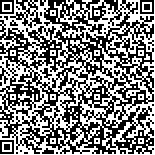| 引用本文: | 郭建军,陈 波,陈波,游宇,宋天铭,郑海燕,何卓宏.LC-MS/MS测定人血浆中依折麦布和总依折麦布的含量及其应用[J].中国现代应用药学,2020,37(15):1856-1861. |
| GUO Jianjun,CHEN Bo,CHEN Bo,YOU Yu,SONG Tianming,ZHENG Haiyan,HE Zhuohong.Determination of Ezetimibe and Total Ezetimibe in Human Plasma by LC-MS/MS and Its Application[J].Chin J Mod Appl Pharm(中国现代应用药学),2020,37(15):1856-1861. |
|
| 本文已被:浏览 46941次 下载 20801次 |

码上扫一扫! |
|
|
| LC-MS/MS测定人血浆中依折麦布和总依折麦布的含量及其应用 |
|
郭建军,陈 波,陈波,游宇,宋天铭,郑海燕,何卓宏
|
|
1.湖南方盛制药股份有限公司, 长沙 410205;2.湖南恒兴医药科技有限公司, 长沙 410205;3.湖南师范大学"植化单体开发与利用"湖南省重点实验室, 长沙 410081
|
|
| 摘要: |
| 目的 建立人血浆中依折麦布(ezetimibe,EZE)和总依折麦布(total ezetimibe,EZE-T)的LC-MS/MS测定方法,并用于依折麦布片人体生物等效性(bioequivalency,BE)研究。方法 分别采用直接沉淀法和酶解后沉淀法处理血浆样品。内标为依折麦布-d4(EZE-d4),色谱柱为Waters ACQUITY UPLC® BEH C18(2.1 mm×50 mm,1.7 μm),流动相为0.1%乙酸-乙腈(A),0.1%乙酸-水(B),梯度洗脱,流速0.2 mL·min-1。在ESI源负离子模式下使用离子对m/z 408.2→271.0(EZE)和m/z 412.2→271.1(EZE-d4)进行MRM定量分析。对口服相同剂量受试制剂或参比制剂依折麦布片的健康受试者的血药浓度进行定量分析。结果 血浆中内源性物质不干扰待测物定量,EZE、EZE-T及EZE-d4不存在相互干扰和/或相互转化。人血浆中EZE和EZE-T的线性范围分别为0.1~20,1~200 ng·mL-1,线性关系良好。待测物与内标提取回收率均为102.4%~109.8%;内标归一化基质效应因子均为98.5%~99.4%,变异系数(CV)均<5%;批内、批间准确度偏差均<15%,CV均<10%。用本法测定得到的EZE和EZE-T的浓度水平及获取的药动参数与文献报道一致,生物样品再分析复测值与原测值的偏差均<10%。结论 本法特异性强、灵敏、准确,重复性好,所需样本体积少,满足依折麦布片人体BE研究的定量分析需求。 |
| 关键词: 依折麦布 依折麦布葡萄糖醛酸结合物 总依折麦布 生物等效 液相色谱-质谱联用 |
| DOI:10.13748/j.cnki.issn1007-7693.2020.15.010 |
| 分类号:R917.101 |
| 基金项目:长沙市科技计划项目(kh1801217) |
|
| Determination of Ezetimibe and Total Ezetimibe in Human Plasma by LC-MS/MS and Its Application |
|
GUO Jianjun1,2, CHEN Bo3,4, CHEN Bo1, YOU Yu2, SONG Tianming2, ZHENG Haiyan2, HE Zhuohong2
|
|
1.Hunan Fangsheng Pharmaceutical Co., Ltd., Changsha 410205, China;2.EverPro Medical Co., Ltd., Changsha 410205, China;3.Key Laboratory of Phytochemistry R&4.D of Hunan Province, Hunan Normal University, Changsha 410081, China
|
| Abstract: |
| OBJECTIVE To establish LC-MS/MS methods for the determination of concentration of ezetimibe(EZE) and total ezetimibe(EZE-T) in human plasma and to use for a bioequivalence(BE) study of ezetimibe tablet formulations. METHODS Plasma samples were pre-treated by direct precipitation and post-enzyme precipitation for quantification of EZE and EZE-T, respectively. Ezetimibe-d4(EZE-d4) was used as the internal standard(IS). The analyte was retained and eluted using a Waters ACQUITY UPLC® BEH C18 column(2.1 mm×50 mm, 1.7 μm), with a binary mobile phase system consisting of 0.1% acetic acid-acetonitrile(A) and 0.1% acetic acid-water(B) at a flow rate of 0.2 mL·min-1. EZE and EZE-d4 were detected in an ESI source under negative ion mode, used the ion transitions of m/z 408.2→271.0 and m/z 412.2→271.1 for EZE and EZE-d4, respectively. The quantitation method was applied to analyze the blood drug concentration of healthy subjects after oral administration of the same dose of test or reference preparation ezetimibe tablets. RESULTS Endogenous substances in plasma did not interfere with the quantitative determination of the analyte, and EZE, EZE-T, EZE-d4 had no mutual interference and/or mutual transformation. The quantitative ranges of EZE and EZE-T in human plasma were 0.1-20 and 1-200 ng·mL-1, respectively, with good linearity. The recoveries of the analytes and IS were recorded between 102.4% and 109.8%. The IS-normalized matrix effect factors were recorded between 98.5% and 99.4% with coefficient of variation(CV) <5%. Intra- and inter-batch accuracy and precision were <15% with CV<10%. The plasma concentrations of EZE and EZE-T determined by the method and the pharmacokinetic parameters calculated there after in the BE study were in accordance with those found in previous reports. The deviation between the re-measured value of incurred sample reanalysis and the original measured value was <10%. CONCLUSION The method is specific, sensitive, accurate, reproducible requiring small sample volumes, and comfortably meets the requirements of ezetimibe BE studies. |
| Key words: ezetimibe ezetimibe glucuronic acid total ezetimibe bioequivalence LC-MS/MS |
